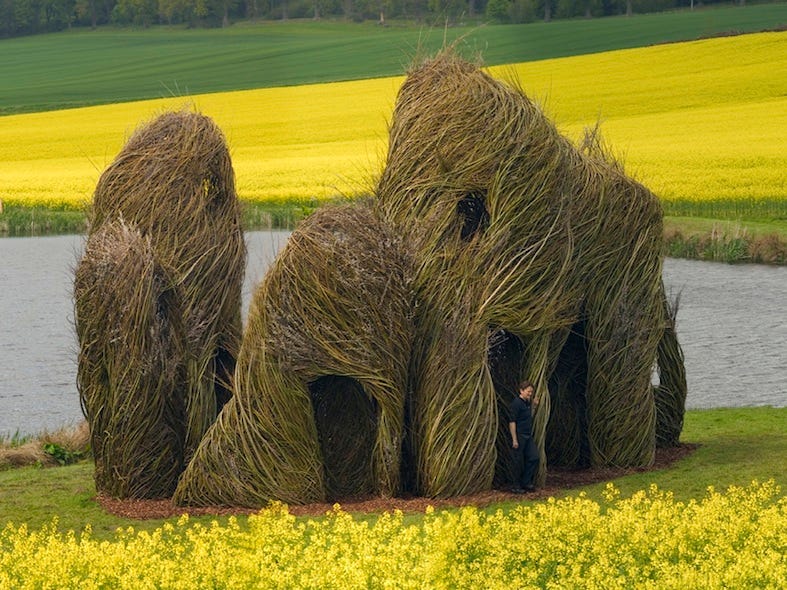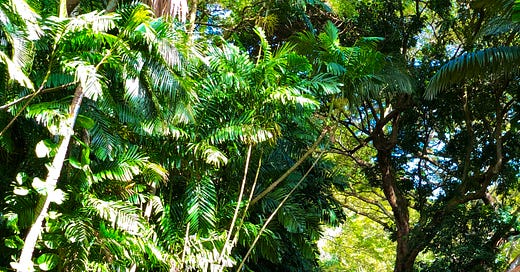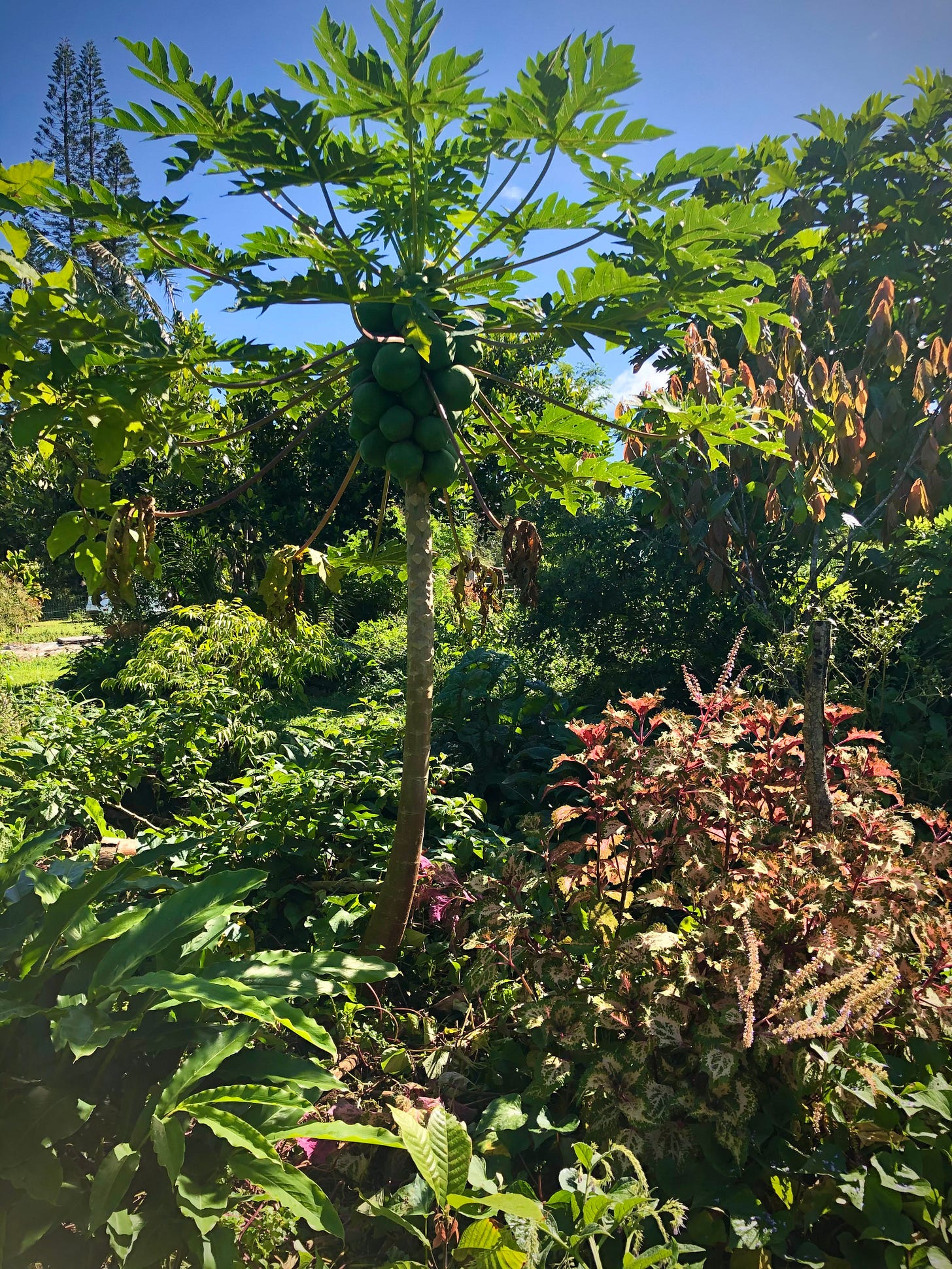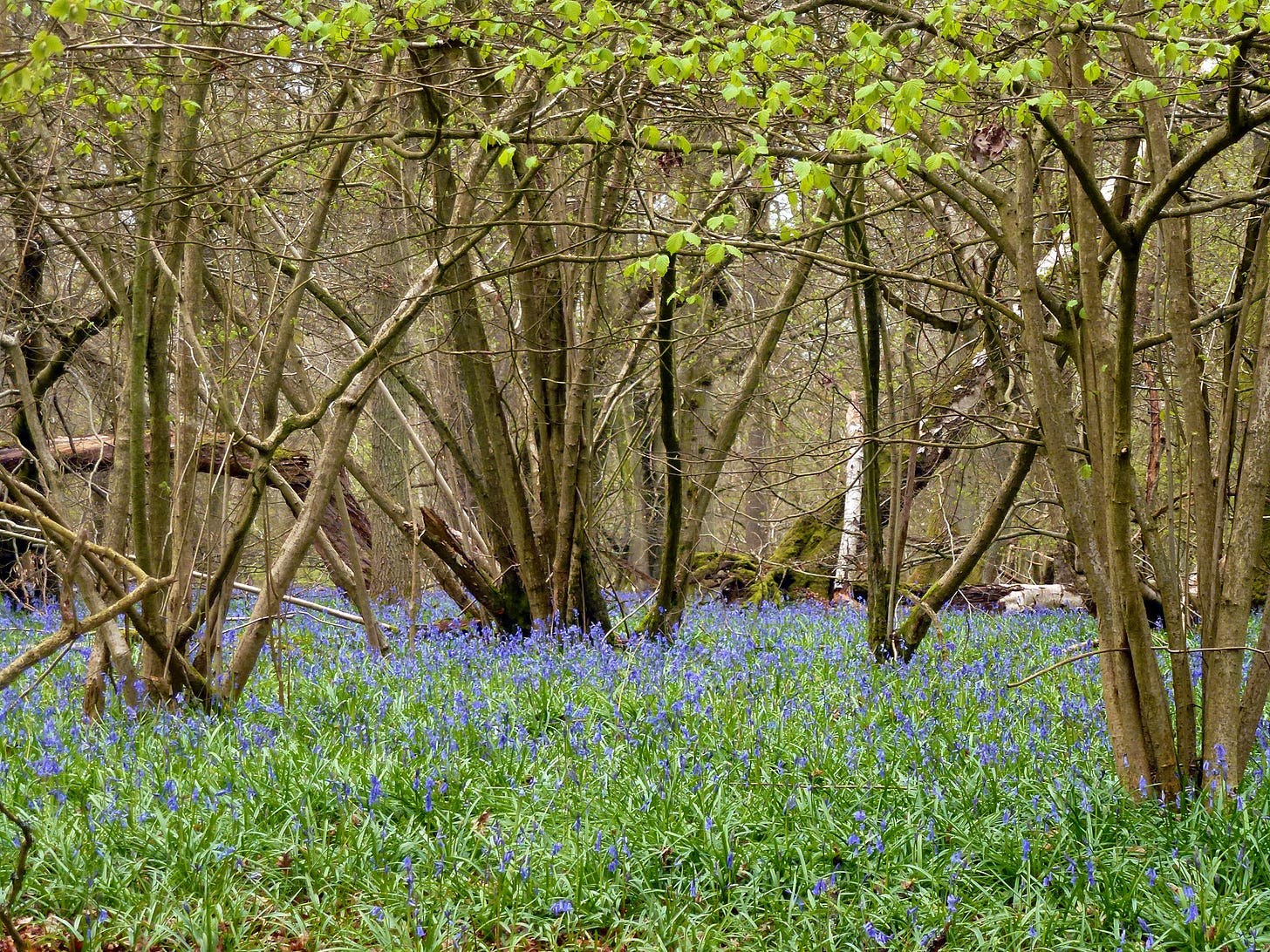What I appreciate most about permaculture is its emphasis on closed-loop systems. In a closed-loop, there is no “waste”; everything is part of the supply chain for something else. Do you have too many slugs? No, you have too few ducks.
That sort of resourceful thinking ought to be applied to the climate crisis, which is—at its root—a waste management problem. We have too much CO2; it’s the leftovers from fossil fuel energy production. Any attempt to resolve this waste management problem is necessarily a political act, and without seismic political and economic changes, no technical solution—no matter how elegant or feasible—can be implemented. However, in order to mobilize the political power necessary to achieve those changes, people need to know that a technical solution exists; otherwise, what's the point. Today, I'm going to focus on the technical side.
Of course, the very obvious first step when one has a waste management problem is to stop producing more. But even if we stopped burning fossil fuels this very minute, we would not want to stay at today’s 425.48 ppm of atmospheric CO2 because it’s not as favorable for human life as the pre-industrial concentration of 280 ppm.
So, how can we close the loop and treat excess CO2 as part of a supply chain? What is the proverbial duck to the CO2 slug?
Owing to the immense nature of the problem, the answer must be, “Lots of things.” But those things almost all fall into a single category: they’re carbon-based lifeforms. That’s how carbon came to be stored as fossil fuels, and that’s the only viable path to getting it out of the atmosphere.
But let’s pause for a moment to consider a proposed alternative: sending it to the dump. That’s the techno-fantasy method of carbon sequestration, and it’s called direct air capture, an unworkable industrial technology that uses an unthinkable amount of nonexistent energy to suck CO2 out of the air and store it somewhere nonexistent that is safe for the long term.
Direct air capture is incapable of fixing the problem for practical reasons, so quite understandably that’s what its critics tend to focus on. But there’s another problem, according to the ethic outlined above: it seeks to throw away a valuable resource.
What is the resource, exactly? It’s carbon, the building block of life. You might be thinking, “But don’t we want to sequester CO2, not carbon?” The answer is no. There is no need to sequester those two atoms of oxygen along with the carbon; it would be a lot more work and a bad thing, regardless. We don’t have an excess of oxygen (in fact, burning fossil fuels has led to an alarming decline in atmospheric oxygen over the last 100 years.)
When plants take in CO2, they use the energy supplied by photosynthesis to break up the molecule, releasing the oxygen and keeping the carbon for itself. Owing to the higher atomic weight of those two oxygen atoms, for every gram of carbon added to a plant’s biomass, 3.62 grams of CO2 are removed from the atmosphere.
In order to reach 350 ppm—the level we were at in 1988—we’d need to remove 500 billion tons of CO2 from the atmosphere. To hit the pre-industrial mark of 280 ppm, 900 billion tons. If we were to use plants to accomplish this, we would need them to add 138 billion tons and 249 billion tons of biomass, respectively. This is roughly the equivalent to 1.3 and 2.5 Amazon rainforests, respectively, if we count both above and below ground biomass.
So, what can we do with all that carbon? As the Amazon analogy implies, growing more forests would do the trick. In the last 10,000 years, the Earth has lost 7.7 million square miles of forest, equal to 2.85 Amazons. So we can exceed our target for atmospheric CO2 removal by returning to the 57% forest coverage of Earth’s habitable surface that we had at the end of the last Ice Age. That was the climate that allowed for the vast expansion of humanity, so that approach holds a lot of appeal.
Additionally, the Amazon analogy demonstrates that vast reforested areas can support human civilization beyond simply sucking down CO2. The Amazon itself is a vast food forest filled with edible species that were planted 4,500 years ago by its human occupants, who built a thriving civilization based on the readily available food surrounding them. A contemporary global reforestation initiative should also focus on edible species, thus serving the dual purpose of creating an abundant perennial food source and sequestering CO2. A mature food forest can yield at least 2,100,000 calories per acre with minimal inputs, enough to feed two adults. A stable climate PLUS more free food than all of humanity could possibly eat sounds pretty good.
It goes without saying that climate change is not the only ecological catastrophe facing humanity. We have crossed six of nine planetary boundaries, any one of which could spell our doom. A globe-spanning food forest would help address those looming disasters, such as biodiversity loss and biogeochemical flows, as well.
But there are challenges to the forestry approach. Environmental conditions have degraded immensely in the last 100 years, and it's possible that not all previously forested areas would now support trees. Some estimates put the possibility of reforestation at half of the 7.7 million square miles lost and argue it would take thousands of years to accomplish. I have doubts about these estimates, but it's important to be cautious. Additionally, the principle of redundancy is crucial in permaculture, and it's not hard to see how it applies here: we would not want to put all our eggs in one basket with the future of life on Earth at stake.
So how can we move faster while diversifying our risk?
Recently, I wrote about using housing as a carbon sink. A single semi-detached house made from wood and straw bales sequesters 15 tons of CO2. If such homes are built by hand from renewable local materials, the entire process is carbon negative. Perennial production systems such as coppice agroforestry involve the harvesting of above-ground biomass from plants that repeatedly grow back; 25-40% of the carbon, however, is stored in the roots, leaf litter, and soil bacteria. This, of course, goes unharvested and grows with time, increasing the amount of carbon sequestered even as a tree or grass is cut repeatedly.
In this fashion, a worldwide effort to build comfortable, ecological homes for all could sequester a great deal of carbon very quickly. The species used in such production systems, such as black locust and bamboo, grow extremely fast, allowing for an initial harvest in less than a decade. The key would be the renewable, manual production of organic materials, combined with locating production on currently non-carbon sequestering land, such the 40% of American corn acreage dedicated to ruinous ethanol production. Fortunately, such renewable, regenerative production of biomass has a long and successful history.
But let's push this concept further. If everything we build in this fashion is a carbon sink, why stop at houses? How about medical clinics, town canteens, municipal saunas, and community workshops made of cob and straw? Why not build cathedral-like libraries from bamboo and grass? How about enormous woven willow sculptures as monuments to celebrate the global carbon sequestration effort?

All of these things are feasible. They have been done for thousands of years, and we can harness them to meet the ecological challenges we face today. This closed-loop approach to carbon sequestration would yield a world with both a safe climate and "communal low-tech luxury," as Max Ajl calls it in his excellent book, A People's Green New Deal. It is not just a vision for climate stability and justice but also beauty and comfort.
What stands in our way is not technical feasibility but politics: the struggle for power.
For daily updates, you can follow me on Twitter, Instagram, Bluesky, and Mastodon.







"But let's push this concept further. If everything we build in this fashion is a carbon sink, why stop at houses? How about medical clinics, town canteens, municipal saunas, and community workshops made of cob and straw? Why not build cathedral-like libraries from bamboo and grass? How about enormous woven willow sculptures as monuments to celebrate the global carbon sequestration effort?"
Love this, we should add union halls to the mix, too!
As usual, an inspirational and very concise piece! I was wondering, you often mention using materials like bamboo, wood or straw to build carbon-negative housing. How do you envision this being done in a sustainable but large scale way that has high output but retains soil health, biodiversity, etc? How would you organize and plan agroforestry to account for these necessary materials?